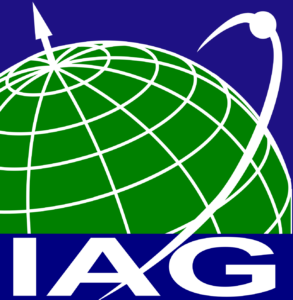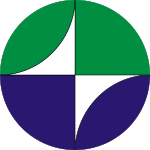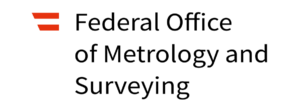Structure of the IAG
The International Association of Geodesy (IAG) is a global scientific organization dedicated to advancing geodesy through research, collaboration, and the development of geodetic infrastructure. IAG operates through a well-defined structure consisting of several key components, each playing a vital role in fulfilling its mission.
Main Components of IAG
-
Commissions – The IAG Commissions focus on fundamental geodetic research and coordinate scientific activities in their respective areas
-
Inter-Commission Committees (ICC’s) – These committees address interdisciplinary topics that require collaboration between multiple commissions.
-
Global Geodetic Observing System (GGOS) – As IAG’s flagship initiative, GGOS integrates geodetic observations from various techniques to monitor the Earth system, ensuring high-precision global geodetic reference frames and data for scientific and societal needs.
-
IAG Services – A network of international services provides essential geodetic products, such as reference frames, Earth orientation parameters, gravity field models, and GNSS solutions, supporting both scientific research and practical applications.
-
IAG Projects – These are time-limited initiatives that focus on specific geodetic challenges, fostering collaboration and innovation across the community.
This structured approach allows IAG to effectively coordinate global geodetic research and infrastructure, ensuring that the geodetic community can address scientific and practical challenges related to Earth observation, navigation, and geodynamics.
Government and Management
-
IAG Council – The IAG Council is the highest governing body of the IAG, responsible for setting the overall strategic direction and major decisions related to the association’s activities. It meets periodically to discuss and make decisions on key geodetic matters.
-
IAG Executive Committee (EC) – The IAG EC oversees the day-to-day operations of the IAG, implementing the policies and decisions of the Council. It is responsible for the overall management of IAG’s activities and represents IAG in international forums.
-
IAG Bureau – The IAG Bureau consists of key officers (IAG President, Vice-President, and Secretary-General) who lead and support the operational activities of the IAG. The Bureau ensures coordination among the IAG’s various components, making critical decisions and providing leadership to the IAG’s structure.
Administration
-
IAG Office – The IAG Office – led by the IAG Secretary General – provides essential administrative support to the organization, facilitating communication between IAG’s bodies, members, and the global geodetic community. It assists with event coordination, documentation, and logistical tasks.
-
IAG Commission on Bureau (COB) – The IAG COB promotes geodesy and IAG, manages communication and outreach, and supports the IAG Secretary General with events, the IAG website, and social media.
-
IAG Secretariat (is planned to establish in future)
These governance, management, and administrative components work together to ensure that IAG functions effectively, supporting global geodetic research, services, and infrastructure.




